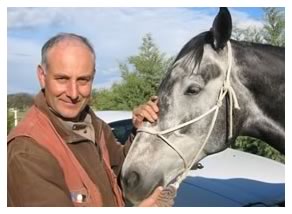
Home › Girth Pain & Dysfunction › Symptoms
Symptoms often clinically associated with Girth Pain Syndrome
Note: A number of these symptoms can be associated with saddle soreness and other problems.
On fastening of the girth
- Attempting to bite the handler. Often repeated at each stage of tightening the girth. This is the most common and most obvious symptom.
- Inflating the chest to fix and splint their ribs. Also prevents the girth being applied very tightly, and may brace the horse to protect from pain.
- Kicking at the girth.
- Slight change in facial expression, often a partial closing or tightening of the eyes or a frown.
- Grunting.
- Lifting the head, swishing the tail.
Once girthed up
- Short stepping, refusing to move forward freely for 10-20 minutes after being saddled.
- Being one sided, or having difficulty taking one lead. Very common.
- Resisting leg aids.
- Commonly “humping up”, pigrooting or bucking at the start of a ride and especially during the transition from trot to canter on the most affected side, then settling as though nothing had ever been wrong.
- In extreme cases violent bucking and/or pigrooting and /or lying down for a short spell after being girthed up.
- Swishing the tail, laying ears back.
- Grunting while being ridden, especially when going down hill.
- Generally being unhappy and piggy through the ride (while may be happy and a wonderful horse when not ridden.)
- Rushing jumps.
- Resistance to turning sharply.
- Readily developing girth sores.
Signs often seen as a response to touch
- The skin of the girth area of most horses is ticklish behind the elbow; however, gentle stroking should remove any reaction. If the skin remains jumpy when touched after gentle stroking then there is probably an active problem.
- When tapping or prodding the skin behind the elbow, the muscles all jump, including the muscles of the leg above the elbow.
- Tightness and tenderness of the muscles under the girth.
- Tightness & tenderness of the muscles above the shoulder blade and under the front of the saddle.
- Uneven shoulders with saddle slipping to the lower shoulder and rider having to correct to the opposite side.
Other problems that appear to be associated with
“Girth Pain Syndrome”
- The hoof of the most affected side is usually narrower and higher in the heel, than its opposite pair. This also changes leg length and shoulder angle. Usually trouble taking the canter lead on this side.
- Restricted vertebrae and restricted ribs appear to make breathing harder (Morrison J. Master of Chiro. Sc research thesis. Undergoing completion.) – possibly reduces performance in racehorses, and possibly increases the chance of horses bleeding from the lungs.
- The triceps muscles of the legs are often tighter. This is likely to reduce the ability of these muscles to cushion the horses stride, which would increase leg concussion, and potentially lead to lower leg injuries.
- The muscles under the tree point of the saddle are tighter and more tender, and thus are more susceptible to saddle damage and more likely to be painful.
